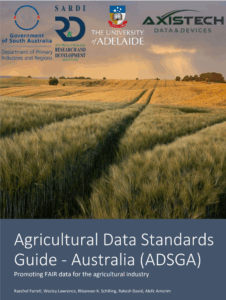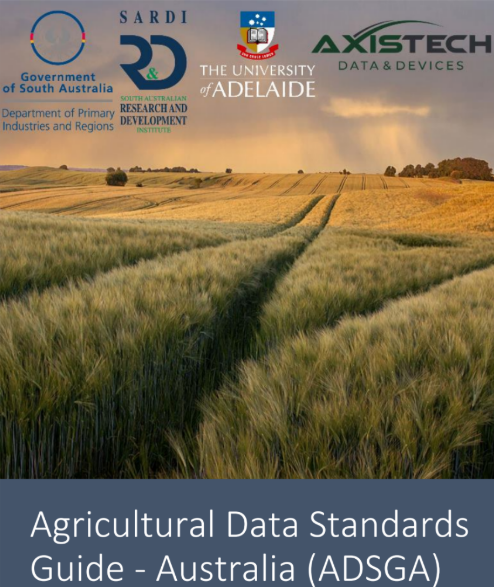
Agricultural Data Standards Guide - Australia (ADSGA)
The Agricultural Data Standards Guide — Australia (ADSGA) is a collaborative, open resource for anyone working with agricultural data. It’s designed to help stakeholders across the agrifood industry manage and share data in a digital, machine-actionable way. The guide aligns with the FAIR principles (Findable, Accessible, Interoperable, Reusable) as set out by the Agricultural Research Federation (AgReFed).
It covers:
Vocabulary standards: agreed terms for data fields (e.g. “soil_moisture”, “crop_type”)
Attribute names & units of measurement (UoM): how to standardise units, avoid ambiguity (e.g. metric vs imperial)
Data formats & structure: machine-readable schemas, how to store and ingest data
Metadata & data provenance: source, ownership, timestamping
Why data standards matter
Data standards are the foundation for:
Interoperability: Datasets can be shared between systems, tools, devices, and farms.
Scalability & automation: Enables downstream analytics, machine learning, AI to work reliably.
Reusability: Other researchers, farms, or services can use existing data without rework.
Decision support: Farmers, policymakers, technology providers can make better data-driven decisions.
Who benefits from ADSGA?
Technology providers and device manufacturers producing sensors/data instruments
Farmers & agribusinesses capturing, using, or sharing data
Researchers & analysts working in agriculture, sustainability, environment
Software developers building farm management systems, dashboards, mapping tools
How the Guide is organised
Standards & Vocabularies – lists of reference standards and controlled vocabularies recommended in Australia.
Attribute Names & Units – definitions, required fields, allowable units, format examples.
Data Format & Structure – guidelines for schema, machine-readable file types (CSV, JSON, etc.), and best practice for organizing datasets.
Metadata & Provenance – what metadata should accompany datasets (author, date, geolocation, sensor details, etc.).
Use Cases & Examples – sample datasets, device data, case studies showing how standards are applied.
FAQs
Q: What is FAIR data in agriculture?
A: FAIR stands for Findable, Accessible, Interoperable, Reusable. It’s a set of principles that ensure data is structured and managed so that people and machines can easily find, access, integrate, and reuse it.
Q: Is the ADSGA mandatory?
A: No. The guide is non-prescriptive. It offers recommended vocabularies and best practices, rather than regulations. Stakeholders can adapt as needed while maintaining compatibility.
Q: Can I suggest additions or changes to the standards?
A: Yes. Please email info@axistech.co
Q: How do I implement ADSGA standards in my systems?
A: Begin with mapping your current data fields to the guide’s recommended vocabulary, convert units to standard UoMs, use the schema formats and include metadata. Use tools (or code) that support machine-readable formats.
Key terms (glossary)
Vocabulary: A defined list of terms used for naming data fields
Attribute name: The name of a specific data field (e.g. “temperature”, “soil_moisture”)
Unit of Measurement (UoM): The standard unit used to express a measurement (e.g. “°C”, “mm”)
Metadata: Data about the data (e.g. when, where, by whom the data was collected)
Machine-readable format: A to/from format that software can parse (e.g. JSON, CSV with schema)

